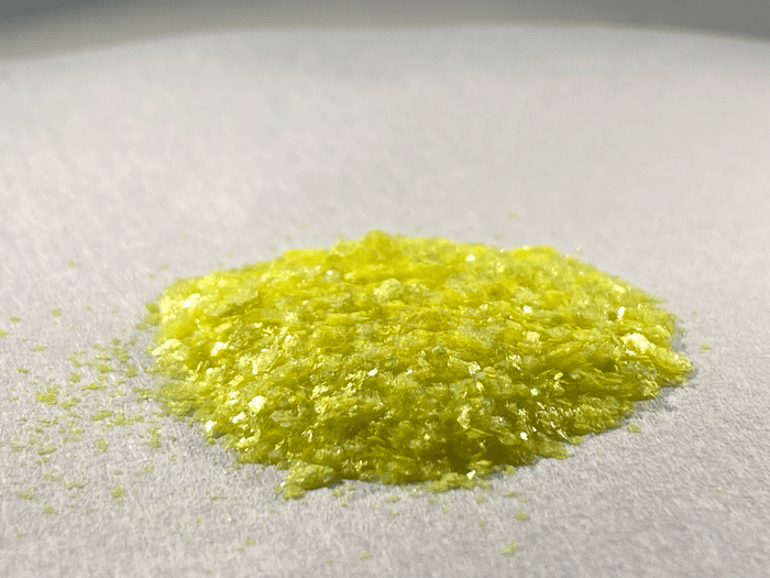Summary: The compound Salen effectively binds to a number of SARS_CoV_2, the virus that causes COVID-19, proteins. The findings pave the way for developing new therapeutics to fight coronavirus.
Source: URAL Federal University
Researchers found out that salen is able effectively bind a number of proteins of the coronavirus SARS-CoV-2.
Scientists used the method of molecular docking and discovered, that salen shows activity to the non-structural protein nsp14, which prevents the destruction of the virus.
The new finding can be useful for new drugs creation and effective treatments for coronavirus infection.
The results of the study are published in the Polycyclic Aromatic Compounds.
“Our study focused on a well-known compound, salen. We tried to assess the potential activity of this compound against a series of proteins of the SARS-CoV-2, which cause the Covid-19 disease.
“We found out that salen can potentially interact with the studied proteins, and the best results were obtained for the non-structural protein nsp14, which protects the virus from destruction”, says Damir Safin, Research Engineer at the Organic Synthesis Laboratory of Ural Federal University.
The term “salen” refers to a tetradentate Schiff base, derived from salicylaldehyde and ethylenediamine. Salen itself as well as its derivatives are important ligands in many fields of practical application.
This is an organic compound which is capable to coordinate some metals, stabilizing them in different oxidation states. Metal complex compounds of salen derivatives are also actively used as catalysts.
As a part of salen contains two “fluid” hydrogen atoms of hydroxyl groups. Each of these hydrogen atoms can move to nitrogen atoms, thereby forming different shapes of the molecule. Such a process is called tautomerization, and the participants in this process are tautomers or tautomeric forms.

“We’ve explored the potential interaction of various tautomers salen with SARS-CoV-2 proteins to identify the most preferred tautomeric form of the studied molecule in terms of the effectiveness in interaction with proteins.
“Of course, our research is only the first step towards understanding how salen can be used in the fight against Covid-19, much remains to be explored. However, the results we obtained inspire a certain optimism”, adds Damir Safin.
A study was carried out by scientists from the Innovation Center of Chemical and Pharmaceutical Technologies of Ural Federal University, Kurgan State University and Tyumen State University.
About this COVID-19 research news
Author: Anna Marinovich
Source: Ural Federal University
Contact: Anna Marinovich – Ural Federal University
Image: The image is credited to UrFU / Damir Safin
Original Research: Closed access.
“Salen: Insight into the Crystal Structure, Hirshfeld Surface Analysis, Optical Properties, DFT, and Molecular Docking Studies” by Damir Safin et al. Polycyclic Aromatic Compounds
Abstract
Salen: Insight into the Crystal Structure, Hirshfeld Surface Analysis, Optical Properties, DFT, and Molecular Docking Studies
We report on a known Schiff base dye salen. The crystal structure of salen is in the enol–enol tautomer. Molecules are packed into a 3D supramolecular framework through C–H···π interactions.
The absorption spectrum of salen in CH2Cl2 exhibits three bands in the UV region, while the spectrum in MeOH contains an additional band at 403 nm and a shoulder at 280 nm, corresponding to the cis-keto tautomer. The emission spectrum of salen in MeOH exhibits a band at 435 and 457 nm upon irradiation at 280 and 400 nm, respectively, arising from the enol–cis-keto* and/or cis-keto–cis-keto* tautomers.
The solution of salen in CH2Cl2 showed dual emission with the bands at 349 and 462 nm upon irradiation at 290 nm with the low-energy emission band arising from the enol–cis-keto* and/or cis-keto–cis-keto* tautomers, while the high-energy band corresponds to the enol–enol* tautomer. The emission spectrum of salen in CH2Cl2 exhibits a single band at 464 nm upon irradiation at 380 nm, arising from the different conformers of the enol–cis-keto* and/or cis-keto–cis-keto* tautomers. The DFT calculations revealed that the enol–enol tautomer is the most favorable, followed by the enol–cis-keto tautomer.
The global chemical reactivity descriptors were estimated from the HOMO and LUMO. The DFT calculations were also applied to probe salen as a potential corrosion inhibitor for some important metals used in implants.
The enol–cis-keto and enol–trans-keto tautomers exhibit the best electron charge transfer from the molecule to the surface of all the studied metals, of which the most efficient electron charge transfer was established for Ni, Au, and Co. Molecular docking was applied to study interaction of tautomers of salen with a series of the SARS-CoV-2 proteins, of which the best binding affinity was found toward nsp14 (N7-MTase).







